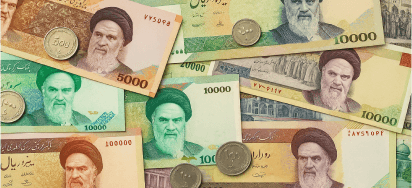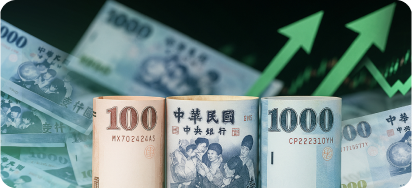Important Information
This website is managed by Ultima Markets’ international entities, and it’s important to emphasise that they are not subject to regulation by the FCA in the UK. Therefore, you must understand that you will not have the FCA’s protection when investing through this website – for example:
- You will not be guaranteed Negative Balance Protection
- You will not be protected by FCA’s leverage restrictions
- You will not have the right to settle disputes via the Financial Ombudsman Service (FOS)
- You will not be protected by Financial Services Compensation Scheme (FSCS)
- Any monies deposited will not be afforded the protection required under the FCA Client Assets Sourcebook. The level of protection for your funds will be determined by the regulations of the relevant local regulator.
Note: Ultima Markets is currently developing a dedicated website for UK clients and expects to onboard UK clients under FCA regulations in 2026.
If you would like to proceed and visit this website, you acknowledge and confirm the following:
- 1.The website is owned by Ultima Markets’ international entities and not by Ultima Markets UK Ltd, which is regulated by the FCA.
- 2.Ultima Markets Limited, or any of the Ultima Markets international entities, are neither based in the UK nor licensed by the FCA.
- 3.You are accessing the website at your own initiative and have not been solicited by Ultima Markets Limited in any way.
- 4.Investing through this website does not grant you the protections provided by the FCA.
- 5.Should you choose to invest through this website or with any of the international Ultima Markets entities, you will be subject to the rules and regulations of the relevant international regulatory authorities, not the FCA.
Ultima Markets wants to make it clear that we are duly licensed and authorised to offer the services and financial derivative products listed on our website. Individuals accessing this website and registering a trading account do so entirely of their own volition and without prior solicitation.
By confirming your decision to proceed with entering the website, you hereby affirm that this decision was solely initiated by you, and no solicitation has been made by any Ultima Markets entity.
I confirm my intention to proceed and enter this website2025黃金價格走勢分析:金價創歷史新高,是投资良机还是风险?
在全球經濟不確定性加劇的背景下,黃金作為避險資產的地位日益凸顯。在2025年第一季度,黃金交易展現了強勁的表現,吸引了大量資金流入並創下3396.07美元/盎司的歷史新高。本文將深入探討 2025 年黃金價格走勢分析,結合最新市場數據,協助投資者掌握投資黃金的關鍵資訊。

黃金是什麼?
黃金(XAU/GOLD)是一種稀有貴金屬,化學符號為Au,自古以來因其光澤、延展性及抗腐蝕特性,被視為財富與價值的象徵。歷史上,黃金長期作為貨幣基準和儲備資產,至今仍是全球公認的「終極避險工具」,在經濟動盪、通脹攀升或地緣政治風險加劇時,投資者傾向轉向黃金以保值避險。
在交易市場中,黃金不僅以實物形式(如金條、金幣)流通,更透過期貨、ETF、差價合約等金融衍生品活躍於國際市場,其價格波動常反映市場對風險的預期,並與美元、股市呈反向關聯。各國央行亦持續持有黃金儲備以穩定金融體系,使其在全球資產配置中兼具流動性、避險功能與戰略地位。
2025年黃金價格回顧與最新走勢

年初至今的黃金價格走勢回顧
截至2025年4月,黃金價格已飆升至歷史新高。根據路透社報導,現貨黃金價格於4月21日達到每盎司3,391.62美元,主要受美中貿易戰升級和美元走弱的影響。
此外,Investopedia指出,黃金價格自年初以來已上漲近30%,反映出投資者對避險資產的強烈需求。
近期技術面走勢與關鍵價位
技術分析顯示,黃金目前處於超買狀態,RSI指數達到75,暗示短期內可能出現修正。然而,市場情緒仍偏向樂觀,分析師預測黃金價格可能很快測試3,500美元的關口。
2025下半年黃金價格預測
展望2025年下半年,多家機構對黃金價格持續看好。高盛將年底目標價上調至3,700美元,並在樂觀情境下預測可能達到4,500美元。 花旗銀行則預計未來三個月內金價將達到3,500美元,主要受中國保險公司增加黃金配置的推動。
影響黃金價格的主要因素
全球通膨與利率政策
美聯儲的貨幣政策對黃金價格有著深遠影響。目前市場預期美聯儲可能進一步降息,以應對經濟增長放緩和通膨壓力,這將提升黃金的吸引力。
美元指數與實質利率
美元走弱通常會推動黃金價格上漲。2025年以來,美元指數下跌至三年低點,增強了黃金對國際投資者的吸引力。
地緣政治與市場避險情緒
美中貿易戰、俄烏衝突等地緣政治風險加劇了市場的不確定性,促使投資者轉向黃金等避險資產。
央行購金行為與黃金ETF資金流向
全球央行持續增加黃金儲備,顯示對黃金的長期信心。同時,黃金ETF在2025年第一季度錄得超過210億美元的資金流入,為歷史第二高。
技術面分析:黃金關鍵價位與技術指標
目前,黃金價格的 RSI 指數達到 75,顯示市場可能處於超買狀態,短期內可能出現調整。 投資者應警惕短期內的回調風險,特別是在價格接近歷史高點時。
技術分析顯示,若黃金價格突破 3,500 美元,可能進一步挑戰更高價位;反之,若跌破 3,300 美元,則需關注下方支撐位。
比較:國際現貨黃金 vs 黃金期貨 vs 台銀存摺黃金
| 投資方式 | 優點 | 缺點 |
| 國際現貨黃金 | 流動性高、可雙向交易、即時報價 | 需透過交易平台、價格波動大 |
| 黃金期貨 | 槓桿高、交易成本低、標準化合約 | 合約到期風險、需熟悉交易制度 |
| 台銀存摺黃金 | 無槓桿風險、適合長期保值、政府背景信賴度高 | 流動性低、買賣價差大、無法雙向操作 |
對於希望靈活操作、追求高流動性的投資者,建議選擇國際現貨黃金或黃金期貨;而偏好穩健投資、長期保值的投資者,則可考慮台銀存摺黃金。

黃金投資的風險與應對策略
雖然黃金具備避險特性,但投資黃金並非零風險,以下幾點是投資人常見的風險來源與對應建議:
1. 價格波動風險
2025年以來,由於市場避險情緒高漲,黃金價格快速上漲也帶來劇烈震盪。建議採用分批進場策略,避免一次性重倉,降低追高風險。
2. 槓桿交易風險
使用槓桿放大獲利的同時,也放大損失。選擇如Ultima Markets這類受監管、有嚴格風控機制的外匯交易平台,能降低因滑點與爆倉所帶來的潛在損失。
3. 市場消息風險
例如美聯儲政策變動或突發的地緣政治事件,都可能造成價格劇烈波動。投資者應密切關注經濟日曆與相關數據發佈,並設置止盈止損單進行風險控管。
4. 流動性與交易時差
不同黃金投資產品(如台銀存摺黃金)存在流動性差異,交易不活躍時可能導致價格無法即時成交。建議選擇全球流通性高的黃金CFD或現貨產品,提升資金使用效率。
Ultima Markets:交易黃金的理想選擇
作為專業外匯與大宗商品交易經紀商,Ultima Markets為黃金投資者提供全方位的交易解決方案,特別適合進行黃金價格走勢分析並即時做出操作的用戶。
- 支援多平台交易:包括MT4、MT5與WebTrader,滿足不同裝置與交易習慣。
- 槓桿高達1:2000:靈活運用資金,強化資金效率。
- 點差低至0點起跳:降低交易成本,提升獲利機會。
- 專業分析工具支援:整合Trading Central與技術指標分析,協助用戶精準判讀黃金走勢。
- 嚴格資金安全制度:客戶資金獨立存放於澳洲西太平洋銀行,並受多國金融監管機構合規管理。
- 24/7 中文客服與教育資源:幫助新手快速熟悉平台並制定交易策略。
無論是剛踏入市場的新手,還是擁有多年經驗的進階交易者,選擇如Ultima Markets這樣具備強大後盾的交易平台,是黃金投資成功的第一步。
結語
綜觀2025年黃金市場,從實體央行買盤、ETF資金流入到美元疲軟與利率政策鬆動,黃金價格走勢分析得出市場呈現明顯的多頭趨勢。對投資者來說,這是一個不容錯過的資產配置機會。
- 若您重視保值與穩定回報,台銀存摺黃金為較穩健選擇;
- 偏好靈活操作與技術交易者,則可利用黃金CFD或期貨進行策略佈局;
無論偏好何種方式,選擇一個安全、高效、有風險控管機制的平台,將是邁向黃金投資成功的第一步。立即開啟您的黃金交易旅程,透過Ultima Markets,把握2025黃金的多頭浪潮。
免責聲明:本內容僅作為參考資訊,不能視為任何形式的金融、投資或專業建議。文中觀點不代表 Ultima Markets 或作者對任何特定投資產品、策略或交易的推薦。請勿僅依據本資料作出投資決策,必要時請諮詢獨立專業顧問。












